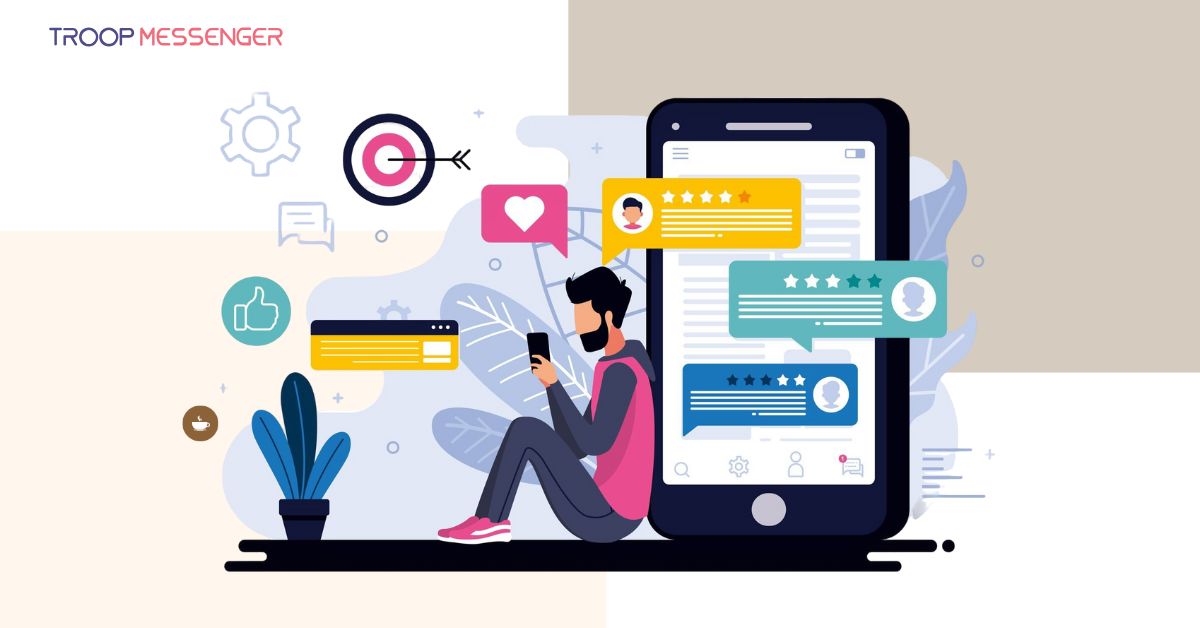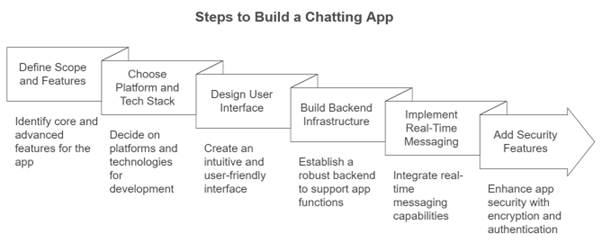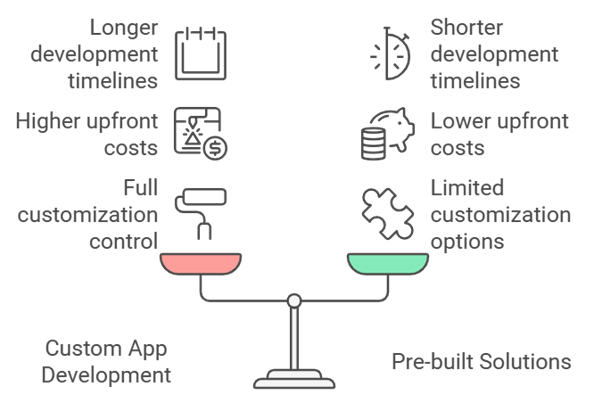Connect with us

How to Create a Messaging Application
Do you want to build a messaging app but are unsure where to start? Despite the intense competition, the demand for innovative messaging solutions continues to grow. Successful apps like WhatsApp, Telegram, and Signal have set high standards, and today’s users seek both ease of use and advanced privacy features.
In this guide, we’ll walk through each step to create a messaging app that delivers secure, real-time communication and a seamless user experience. We've analyzed the best strategies used by successful apps and present them here to help you build an app that stands out and meets modern user needs.
Is It Still Worth Investing in Mobile Chat App Development?
Yes, it is still a viable opportunity to create messaging apps, but it requires careful consideration of several key factors such as competition, user demand, and monetization strategies. The chat app market remains highly competitive, but it still holds great potential for new entrants.
Market Size and Demand
The demand for messaging apps remains strong, with the number of mobile messaging app users projected to reach 3.51 billion by 2025. This growth is fueled by increasing smartphone adoption and mobile internet use, as highlighted in the Mobile Economy 2022 report, which estimates that mobile internet subscribers will reach 5.7 billion by 2025. This suggests a big market for new messaging solutions.
Competition
While WhatsApp is the dominant player with over 2 billion monthly active users as of January 2023, other message apps like WeChat, Facebook Messenger, and Telegram have carved out their user bases by providing unique features. For example, Telegram has attracted users with its encrypted chat modes that support self-destruction; this shows the continuous demand for apps that prioritize privacy and security. Although competition is fierce, there is room for new entrants if they can address unmet user needs or improve on existing features.

Monetization Strategies
A successful chat app requires a solid monetization strategy for long-term profitability. While many messaging apps, like WhatsApp, are free to use, they generate revenue through business-focused services. For instance, WhatsApp's Business API generated $906 million in 2022 by allowing businesses to communicate with their customers. Other potential monetization models include in-app purchases, ads, or subscription-based premium features. Acclear monetization plan is important for sustaining your business in this competitive market.
One of the keys to success is to identify the gaps in top messaging apps and transform them into opportunities. Most users already have multiple chat apps installed and are open to better options that meet their needs. If you offer something distinct, such as improved privacy features, better user experience, or specialized functionalities, you can set your app apart from giants like WhatsApp, Viber, or Telegram.
How to Build a Chatting App in 8 Steps
The development of a real-time chat app consists of multiple stages; each stage requires its own approach to guarantee the app’s functionality, security, and user engagement. This step-by-step guide explains how to develop a messaging app that meets modern expectations and business needs.

Step 1. Define the Scope and Features
To build a successful messaging app, the first step is to define its scope and identify both core and advanced features that will shape the user experience. Real-time messaging capabilities are fundamental, as they allow instant communication. Strongly consider adding file-sharing support for multimedia, such as photos and videos, to make user interaction better. Voice and video call options may boost engagement, which will make the app more versatile. Advanced security features like end-to-end encryption are also highly recommended to protect user data.
Step 2. Choose the Platform and Tech Stack
Decide whether the app will be developed for iOS, Android, or both based on your target audience. Cross-platform tools like React Native can be used for multiple platforms, while native app development services offer improved performance and access to platform-specific features.
For the tech stack, the right combination of frontend and backend technologies is a must; Swift or Kotlin works well for native development, while Node.js or Python (Django) are recommended for backend efficiency. WebRTC and WebSockets are often used for real-time communication.
Step 3. Design the User Interface (UI)
Experts emphasize that an intuitive and user-friendly interface is very important. The design should include clear chat windows, easy-to-navigate contact lists, and push notifications to inform users of new messages. Pre-built UI kits can accelerate development and provide a professional look and feel. A well-structured UI improves the app’s usability and engagement, which is key because it attracts and retains users.
Step 4. Build the Backend Infrastructure
A strong backend infrastructure is recommended with frameworks like Django (Python) or Node.js (JavaScript). Databases such as Firebase or PostgreSQL are also advised; they manage user data. For real-time message delivery, protocols like WebSockets or XMPP, which support seamless, low-latency communication, are suggested. Establish a solid backend early in the process; this step is important for simultaneous interaction management and for the app’s scalability as it grows.
Step 5. Implement Real-Time Messaging
Integration of real-time message capabilities is fundamental. Choose between server-based message systems (storage of messages on a server) or peer-to-peer (P2P) systems, which offer faster delivery directly between users. The use of libraries like Socket.IO for bi-directional communication is highly recommended, as it achieves low latency and seamless message delivery. Proper implementation of this functionality is important for a reliable user experience.
Step 6. Add Security Features
Security features build user trust. To strengthen communication privacy, it is recommended to implement end-to-end encryption protocols like XMPP. Two-factor authentication (2FA) increases account security. To protect stored data, use cryptographic keys to secure sensitive information. These features should be in place to create a safe environment, which helps to maintain user confidence.
Step 7. Test the App Thoroughly
Thorough testing is important. Conduct both automated and manual tests to evaluate functionality, performance, and security. There are a lot of tools that can simulate real-world conditions and validate app stability across various devices and operating systems. Fix bugs and performance issues during this stage to improve the app's reliability before launch.
Step 8. Launch and Monitor the App
Launch the app on major platforms like Google Play and the App Store, and then closely monitor its performance with analytics tools such as Firebase or Google Analytics. Collect user feedback through surveys or app reviews to guide future updates. Regularly monitor and update the app based on user input to maintain its relevance and functionality in the long term.
How to Choose Between Building and Buying
When businesses create a messenger app, they must decide whether to build the app from scratch or use pre-built solutions like APIs and SDKs. Each option has its own advantages and challenges. To decide between building or buying, businesses must evaluate their specific requirements, budget, and long-term goals. If complete customization and control are priorities and resources are available, starting from scratch may be the best route. Conversely, if speed to market and cost-efficiency are more critical, pre-built solutions could be the more practical choice.

- Building an app from scratch provides full control over design, features, and architecture. This approach allows a completely customized experience that matches specific business needs and brand identity. However, this method requires higher upfront costs and longer development timelines. Businesses must invest in a development team, infrastructure, and ongoing maintenance to keep the app functional and up to date. This option suits businesses with specific requirements or those that require complete ownership and control over their app's intellectual property. It is ideal for companies with the technical expertise and resources to handle the complexities involved in developing and maintaining an internal message platform.
- Pre-built solutions like APIs or SDKs can reduce development time and costs. This approach lets businesses concentrate on core features and user experience instead of the technical challenges of real-time message delivery and backend infrastructure. With these components, a fully functional message app can reach the market quickly while offering scalability and performance. However, pre-built solutions may limit customization and control. Businesses might encounter vendor lock-in, which makes it difficult to switch providers or modify the app's capabilities. This option is typically ideal for startups or companies that seek a cost-effective way to deploy message features without substantial investment in in-house development resources.
Creating a chatting app requires a balance between flexibility, control, and cost-efficiency so that the messaging app aligns with the business's strategic objectives and growth potential.
How Much Time and Cost Does It Take to Create a Messenger App?
To build a secure messaging app requires both time and financial investment, and the cost largely depends on factors like developer rates, project complexity, and platform requirements. According to Clutch, app developers typically charge between $25 and $150 per hour. The cost of a complete project can range from $10,000 to $50,000 or more, based on the app's scope. The timeline to develop a secure messaging app can take anywhere from 3 to 6 months for a minimum viable product (MVP), and more complex features can extend development time.
Hiring experienced developers often comes at a higher cost, but their expertise can reduce the likelihood of common technical issues and provide smoother, faster progress. Developers from different regions also charge differently, with U.S. developers generally more expensive than those from countries like Ukraine or India. However, outsourcing can offer cost savings, though it's important to consider language barriers and time zone differences.
To estimate the overall cost and time for your project, you need to clearly define your app's features, platform, and security requirements upfront. Keep in mind that updates after launch and ongoing support will also factor into long-term costs. For more detailed information, consider reviewing this guide to app developer hiring costs.
Conclusion
In this article, we discussed key factors such as market demand, competition, and monetization strategies, which provide a view of the requirements for a successful messaging app. We hope this guide has given you a clear roadmap and practical advice to help you make a messaging app that meets the demands of today’s users and stands out in a competitive market.








